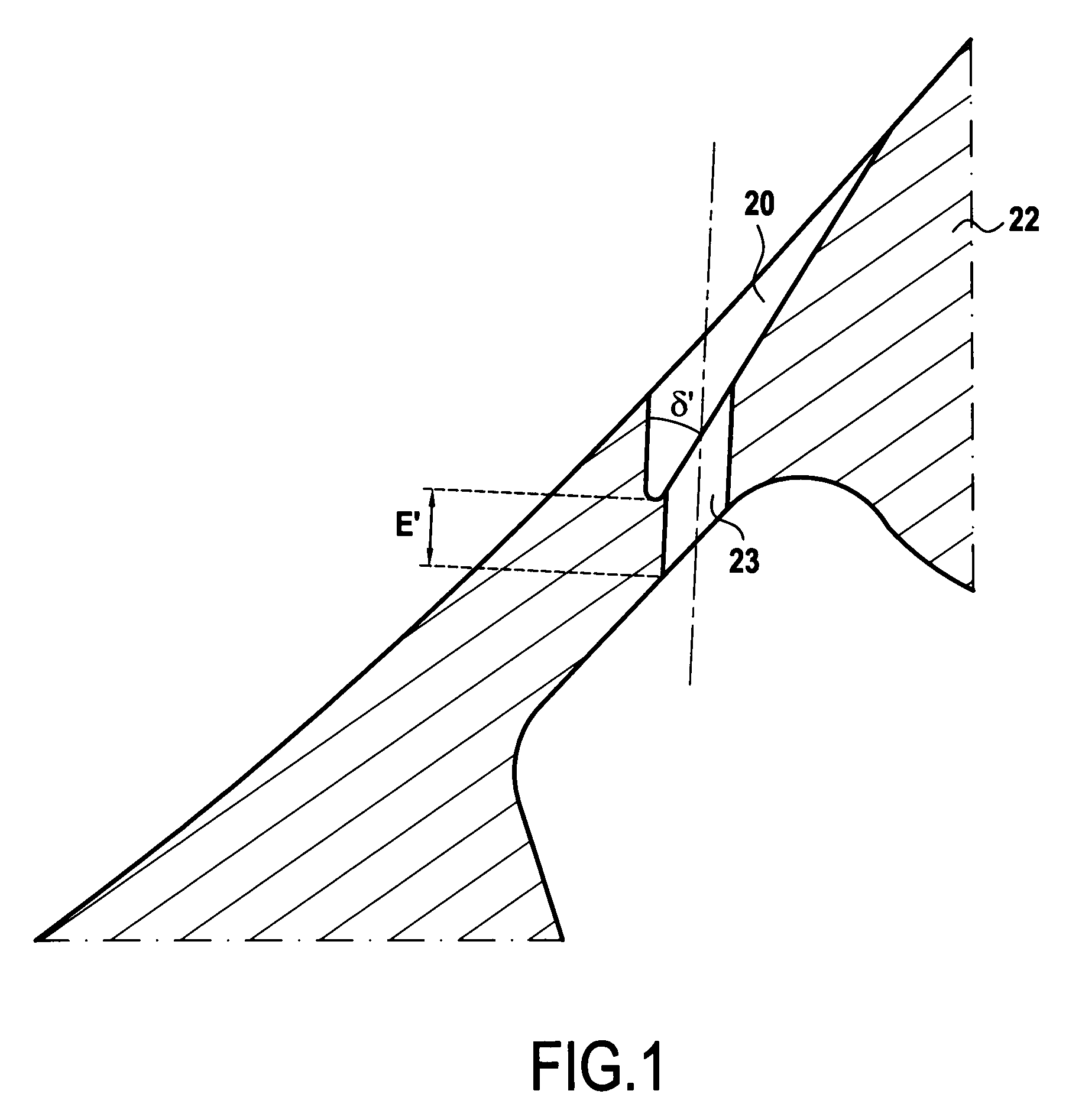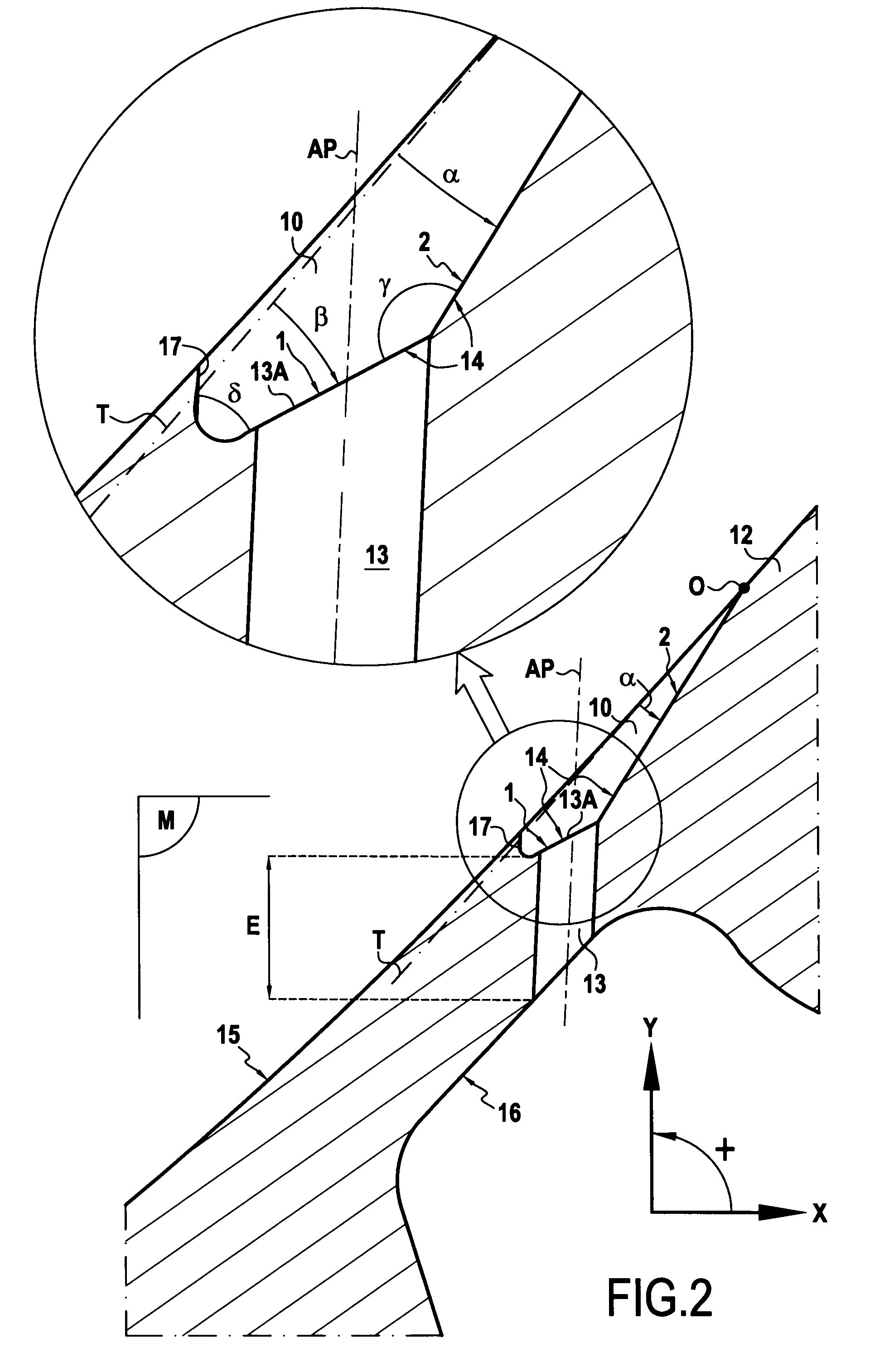Cooling channel formed in a wall
a cooling channel and wall technology, applied in waterborne vessels, climate sustainability, machines/engines, etc., to achieve the effect of optimizing machining operations, improving mechanical strength of walls, and compromising mechanical strength and flow geometry of bottom walls
- Summary
- Abstract
- Description
- Claims
- Application Information
AI Technical Summary
Benefits of technology
Problems solved by technology
Method used
Image
Examples
Embodiment Construction
[0027]An embodiment of the wall element is described with reference to FIG. 2. In this example, a wall element 12 having at least one cooling channel formed therein presents an inside surface 16 and an outside surface 15 suitable for being cooled by cool gas flowing in said channel. The channel comprises a hole 13 and a diffusion portion 10. The hole 13 opens out at one end into the inside surface 16, and its other end into the diffusion portion 10, where it forms an orifice 13A. The diffusion portion 10 flares around the orifice 13A and it is defined by a bottom wall 14 and a side margin 17. Said bottom wall 14 presents a first plane portion 1 into which the hole 13 opens out, and a second plane portion 2 situated at the front of the first plane portion 1 in the cool gas flow direction. Said first and second plane portions 1 and 2 are inclined in the thickness of the wall 12. Thus, in the midplane M of the diffusion portion 10 containing the axis AP of the hole, a first angle β mea...
PUM
| Property | Measurement | Unit |
|---|---|---|
| angle | aaaaa | aaaaa |
| angle | aaaaa | aaaaa |
| angle | aaaaa | aaaaa |
Abstract
Description
Claims
Application Information
 Login to View More
Login to View More - R&D
- Intellectual Property
- Life Sciences
- Materials
- Tech Scout
- Unparalleled Data Quality
- Higher Quality Content
- 60% Fewer Hallucinations
Browse by: Latest US Patents, China's latest patents, Technical Efficacy Thesaurus, Application Domain, Technology Topic, Popular Technical Reports.
© 2025 PatSnap. All rights reserved.Legal|Privacy policy|Modern Slavery Act Transparency Statement|Sitemap|About US| Contact US: help@patsnap.com



